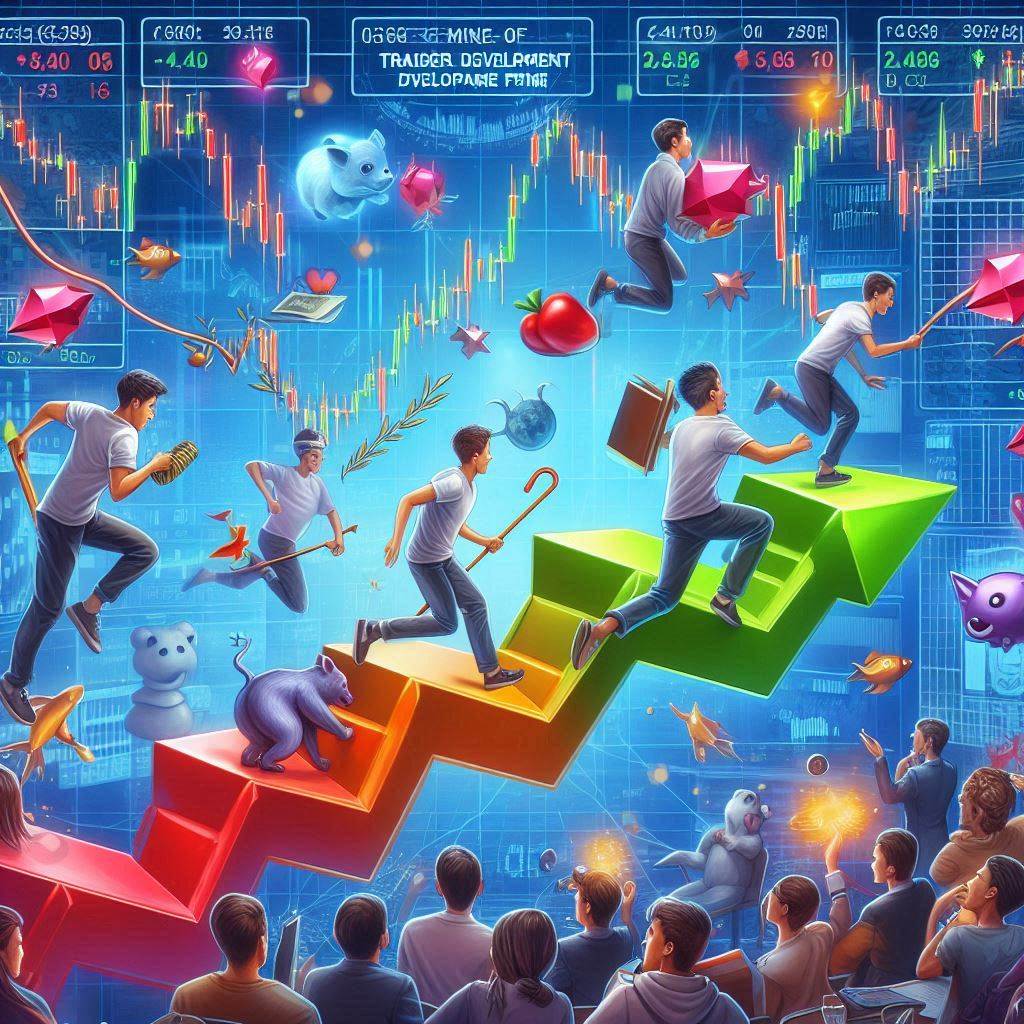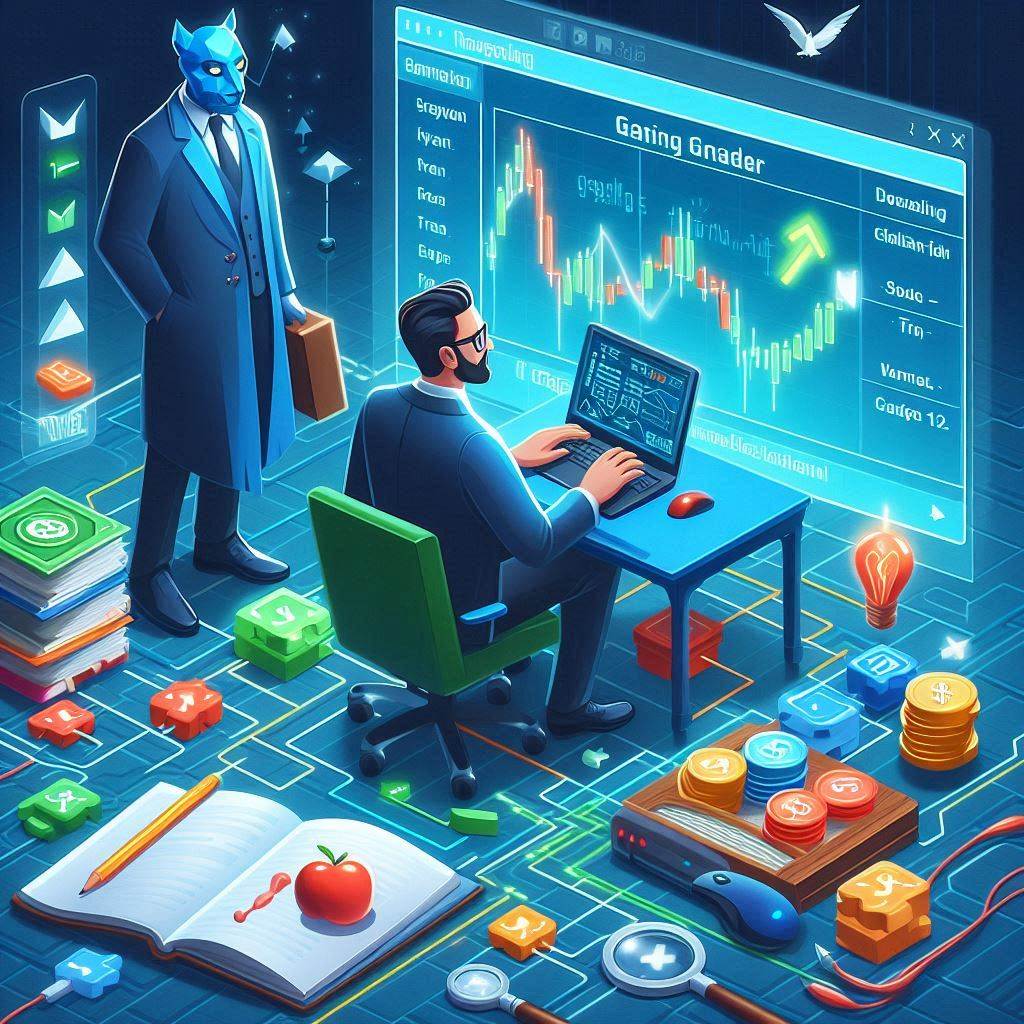Imagine stepping into an arena where every move you make is measured, every decision you take builds your skill, and the rewards for progress are tangible. This is the world of gamified trader development programs: an innovative approach where trading isn’t just a job or a skill but a competitive sport, a game of mastery, and strategy.

In future prop firms, trader development will evolve beyond the traditional model, embracing a dynamic, meritocratic environment where growth is not only encouraged but rewarded through gamification. These programs will turn learning into a thrilling journey, full of challenges, levels, and rewards.
1. The Trading Arena: Turning Learning into a Game
- Traditional trader training can feel like walking through a labyrinth: slow, uncertain, and often without a clear sense of progress.
- You study theory, follow the rules, and gain experience step by step — but the journey can feel long and disconnected from any form of excitement.
- Gamified trader development programs, on the other hand, are like entering an arena where every move counts, and progress is tangible.
- Traders will navigate through challenges, puzzles, and competitions, each designed to test their skills and knowledge. With every level they conquer, their experience grows, and their rewards increase.
- For future prop firms, this gamified approach will foster an environment of engagement and constant improvement, where traders actively participate in shaping their own development through competitive play.
2. The Quest for Mastery: Building Skills Through Progression
- In traditional systems, trader development can sometimes resemble a hurdle race, where each trader must clear one obstacle at a time — often without a sense of the bigger picture.
- Skill development is linear, with one concept following the next, sometimes leaving traders frustrated by slow progress.
- Gamified programs transform this linear process into a quest for mastery.
- Each trader embarks on a journey, where they face real-world scenarios in the form of interactive challenges, each requiring a unique skill set. Completing these challenges unlocks new levels of complexity, expanding their trading knowledge and experience.
- Think of it like a role-playing game (RPG) where traders level up based on their decisions, learning from each “battle” with the market.
- Future prop firms will adopt this gamified progression model, creating not just traders, but master strategists, who are continuously evolving in response to the market’s dynamic challenges.
3. The Leaderboard: Competitive Edge and Recognition
- Traditional training programs offer little in terms of immediate recognition or competition. Traders are often left to compare their progress only to their own past performance.
- Gamified trader development programs are designed like leaderboards, where traders compete not just against the market but against each other in a spirit of friendly rivalry.
- With each challenge completed, traders can see how they rank against others, pushing them to strive for greater skill, sharper strategies, and better decision-making.
- High performers can gain recognition, rewards, and even access to higher levels of responsibility or larger capital allocations within the future prop firms.
- In future prop firms, this competitive system will motivate traders to continuously improve, fostering an environment where the top traders rise through merit — not only due to their knowledge

4. Real-Time Feedback: Learning Through Failure
- Traditional training often lacks immediate feedback, leaving traders to learn from their mistakes over time, sometimes too slowly to be effective.
- Gamified trader development programs will provide instant feedback, making the learning process more immediate and interactive.
- In these systems, a trader’s every decision is met with a consequence or reward. If they misstep, the feedback is swift, allowing them to correct their course in real-time, much like adjusting strategies in a video game.
- This constant feedback loop accelerates skill development, preventing traders from repeating mistakes and empowering them to adapt quickly to changing market conditions.
- Future prop firms will embrace this model, allowing traders to become quicker, more adaptable, and better equipped to handle the volatility of the markets.
5. Reward Systems: Incentives for Mastery and Innovation
- In traditional systems, rewards often feel distant — a long-term goal based on performance metrics or an arbitrary time frame.
- Gamified programs, however, incorporate dynamic reward systems where traders earn tokens, badges, or other incentives for completing tasks, achieving milestones, or solving complex trading scenarios.
- These rewards can be redeemed for tangible benefits like increased capital allocation, access to exclusive resources, or even opportunities for leadership roles within the future prop firms.
- This system creates a continuous cycle of achievement, where traders are motivated not just by the goal but by the rewards and recognition they earn along the way.
- For future prop firms, these systems will transform the journey of a trader into a series of rewarding steps that lead to both personal growth and professional success.
6. Objection: “Does Gamification Undermine the Seriousness of Trading?”
- Some critics might argue that gamified trader development programs trivialize the complexity and seriousness of trading by turning it into a game, potentially overlooking the importance of risk management and disciplined strategy.
- Rebuttal: Gamification does not distract from the seriousness of trading; rather, it enhances the learning process.
- By simulating real-world trading scenarios, gamified systems provide traders with the opportunity to practice and refine their skills in a low-risk environment. This fosters a deeper understanding of the market’s volatility, encouraging disciplined strategies while making the learning process more engaging.
- Future prop firms will ensure that the gamified elements focus on skill-building and performance improvement, integrating serious training methods into an interactive format that prepares traders for real-world success.
7. The Community: Collaborative Growth
- In traditional training systems, traders often feel isolated, learning on their own without a sense of community or collective growth.
- Gamified trader development programs transform this isolation into a sense of community, where traders collaborate, compete, and learn from one another.
- Traders can form teams, join challenges together, or even share strategies and tips in the pursuit of collective success.
- Future prop firms will use this collaborative structure to create a sense of shared purpose and growth, where traders not only enhance their own skills but contribute to the success of their peers.
Gamified Trader Development Programs will redefine how traders learn and grow within future prop firms. By turning the training process into an engaging, competitive, and meritocratic journey, these programs will foster a dynamic ecosystem where traders continuously evolve, sharpen their skills, and build an edge in the markets. Through real-time feedback, progression levels, and competitive incentives, traders will develop both competence and confidence, preparing them for the challenges of the ever-changing financial landscape.




